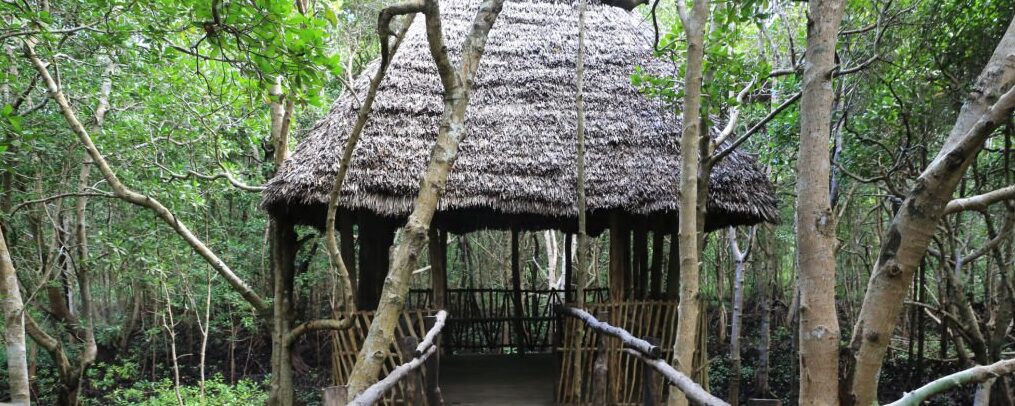Treehouse Accommodations in Tanzania’s Safari Parks: A Unique Wilderness Experience
Tanzania Safari Treehouses, Tanzania is renowned for its breathtaking landscapes, diverse wildlife, and world-class safari experiences. From the vast plains of the Serengeti to the majestic heights of Mount Kilimanjaro, the country offers some of the most unforgettable adventures in Africa. While traditional lodges and tented camps are the most common forms of accommodation in Tanzania’s national parks, a growing trend offers something even more extraordinary: treehouse accommodations.
Staying in a treehouse amidst the wild is a dream come true for nature lovers and adventure seekers. These elevated retreats provide an unparalleled connection with nature, allowing guests to sleep under the stars while listening to the sounds of the African bush. But are there treehouse accommodations in Tanzania’s safari parks? The answer is yes, though they are rare and highly sought-after.
This article explores the unique treehouse lodging options available in Tanzania’s safari destinations, their locations, what to expect, and why they offer one of the most magical safari experiences imaginable.
1. The Allure of Tanzania Safari Treehouses
Treehouse accommodations blend luxury, adventure, and intimacy with nature. Unlike conventional lodges, treehouses elevate guests (literally) above the ground, offering:
-
Unobstructed wildlife viewing – Many treehouses overlook watering holes or game trails, providing front-row seats to animal activity.
-
Exclusivity and privacy – Most treehouses are secluded, offering a romantic or serene escape from crowded lodges.
-
A deeper connection with nature – Falling asleep to the sounds of lions roaring, hyenas whooping, or elephants rustling below is an unforgettable experience.
-
Unique photography opportunities – Elevated vantage points allow for stunning sunrise, sunset, and wildlife shots.
Given these perks, it’s no surprise that treehouse stays are becoming a bucket-list experience for safari-goers.
2. Where to Find Tanzania Safari Treehouses Accommodations
While Tanzania does not have as many treehouse lodges as some other African destinations (like South Africa or Kenya), a few exceptional options exist within or near its most famous parks.
A. Tarangire National Park – Treetops at Tarangire
Location: Inside Tarangire National Park
Operator: Elewana Collection (formerly known as “Tarangire Treetops”)
One of Tanzania’s most famous treehouse-style lodges, Tarangire Treetops, offers an elevated safari experience in the heart of Tarangire National Park. While not traditional treehouses in the sense of being built around a single tree, the lodge features raised wooden cabins on stilts, blending seamlessly into the baobab and marula tree canopy.
Highlights:
-
20 luxury treehouse suites, each with panoramic views of the wilderness.
-
Private balconies where guests can watch elephants, giraffes, and antelopes wander below.
-
An infinity pool overlooking a natural watering hole frequented by wildlife.
-
Nighttime wildlife sounds – Hyenas, leopards, and lions are often heard (and sometimes seen) from the safety of the elevated rooms.
Tarangire is known for its massive elephant herds, baobab-dotted landscapes, and off-the-beaten-path serenity, making this lodge a perfect choice for those seeking a unique wilderness retreat.
B. Lake Manyara National Park – The Tree Lodge (Formerly Lake Manyara Tree Lodge)
Location: Inside Lake Manyara National Park
Operator: &Beyond (formerly known as “Lake Manyara Tree Lodge”)
Though currently under rebranding or possible redesign, Lake Manyara Tree Lodge was one of Tanzania’s most exclusive treehouse-style accommodations. Nestled in a mahogany forest, this lodge offered intimate, elevated suites where guests could enjoy the sights and sounds of the forest canopy.
Highlights (Based on Past Operations):
-
Secluded treehouse suites with open-air designs for immersive nature experiences.
-
Proximity to Lake Manyara’s famous tree-climbing lions (a rare phenomenon).
-
Guided walking safaris and night drives (unique for national parks, where off-roading is restricted).
While the current status of this lodge may vary, it remains a historically significant example of Tanzania’s treehouse safari offerings.
C. Nyerere National Park (Selous) – Beho Beho Treehouse

Location: Nyerere National Park (formerly Selous Game Reserve)
Operator: Beho Beho Camp
Nyerere National Park, one of Africa’s largest protected areas, offers a remote and wild safari experience. Beho Beho Camp, a luxury lodge in the region, features a standalone treehouse for adventurous guests.
Highlights:
-
An open-air treehouse with no walls, allowing for 360-degree wilderness views.
-
Complete immersion in nature – Guests may hear lions, hippos, and leopards at night.
-
Private butler service ensures comfort while maintaining the rustic charm.
This is one of the few true treehouse experiences in Tanzania, where guests sleep completely exposed to the elements (with mosquito nets and safety measures in place).
D. Private Conservancies & Alternative Options
While Tanzania’s national parks have limited treehouse accommodations, some private conservancies and luxury camps offer similar elevated experiences:
-
Chem Chem Lodge (Between Tarangire and Manyara): While not a treehouse, it features luxurious tents on raised platforms with stunning views.
-
Singita Faru Faru (Grumeti Reserves, near Serengeti): Some villas are designed with elevated decks mimicking a treehouse feel.
For travelers willing to explore beyond Tanzania, Kenya’s Loisaba Conservancy (with its famous Starbeds) and South Africa’s Lion Sands Treehouses offer similar magical experiences.
3. What to Expect When Staying in a Tanzanian Treehouse
Staying in a treehouse in the African wild is unlike any other lodging experience. Here’s what guests should anticipate:
A. Wildlife Encounters
-
Animals may wander directly beneath the treehouse, especially at night.
-
Elephants, buffalo, and antelopes are common visitors near Tarangire’s Treetops.
-
Birdwatching is exceptional, with hornbills, eagles, and owls often spotted.
B. Safety & Comfort
-
Treehouses are designed to be secure, with sturdy construction and elevated entrances.
-
Mosquito nets and enclosed sections protect against insects.
-
Most luxury treehouses include full bathrooms, comfortable beds, and private decks.
C. Weather Considerations
-
The dry season (June-October) is ideal, with cooler nights and less humidity.
-
The rainy season (November-May) can bring storms, but the lush greenery is breathtaking.
D. Booking & Accessibility
-
Treehouse lodges are exclusive and expensive (often $800-$1,500 per night).
-
Advance reservations (6-12 months ahead) are recommended.
-
Most are accessible via small charter flights or long drives from Arusha/Dar es Salaam.
4. Why Choose a Tanzania Safari Treehouses Over a Traditional Lodge?
While traditional lodges and tented camps offer comfort and luxury, treehouses provide:
✅ A more immersive wilderness experience – You’re not just observing nature; you’re living in it.
✅ Exclusivity – Many treehouses are standalone, offering privacy unmatched by larger lodges.
✅ Adventure – Falling asleep to the roar of a lion or the trumpet of an elephant is a once-in-a-lifetime thrill.
5. Conclusion: Are Treehouse Safaris in Tanzania Worth It?
Absolutely. While Tanzania has fewer treehouse accommodations than other African destinations, the available options—such as Tarangire Treetops and Beho Beho’s Treehouse—deliver unforgettable experiences.
For travelers seeking a unique, romantic, or adventurous twist on the classic safari, a treehouse stay in Tanzania is a dream come true. The combination of luxury, seclusion, and raw wilderness makes it a bucket-list experience for any safari enthusiast.
Final Tips for Booking a Treehouse Safari:
✔ Book early – These lodges have limited availability.
✔ Combine with other parks – Pair Tarangire with Serengeti or Ngorongoro for a full Tanzanian safari.
✔ Pack wisely – Bring binoculars, a good camera, and warm layers for cool nights.
If you’re ready to elevate your safari experience—literally—Tanzania’s treehouse accommodations await









